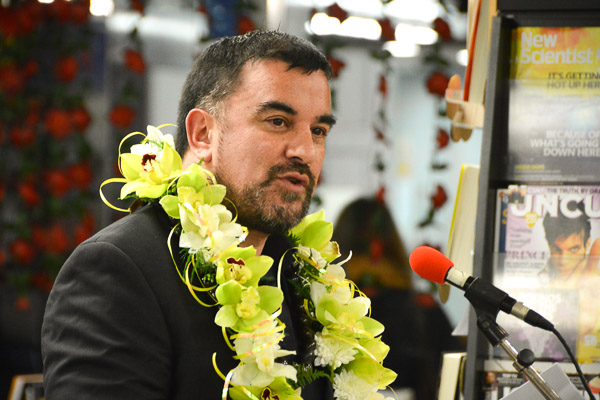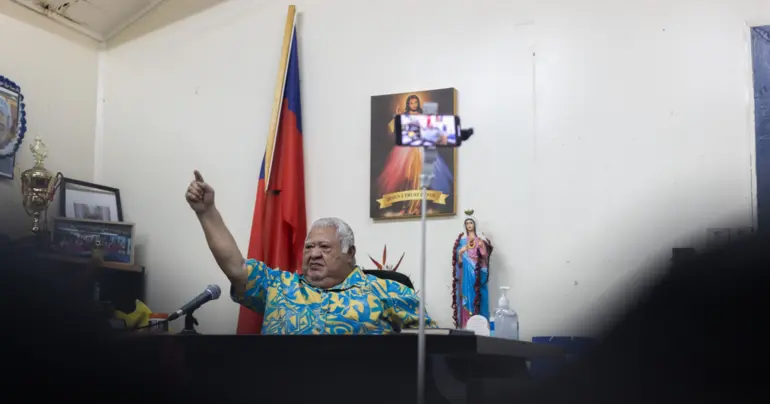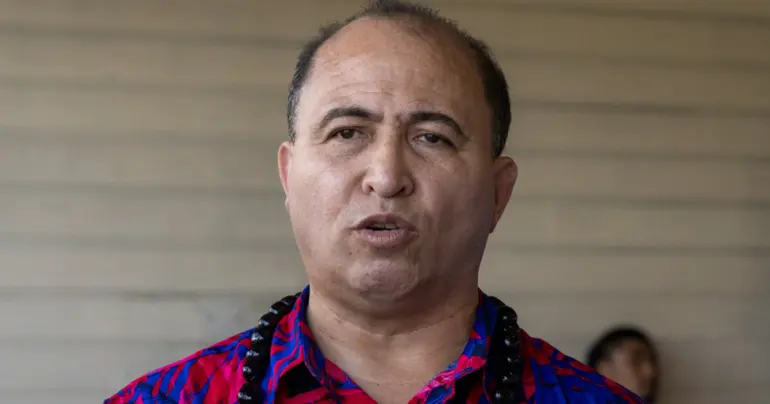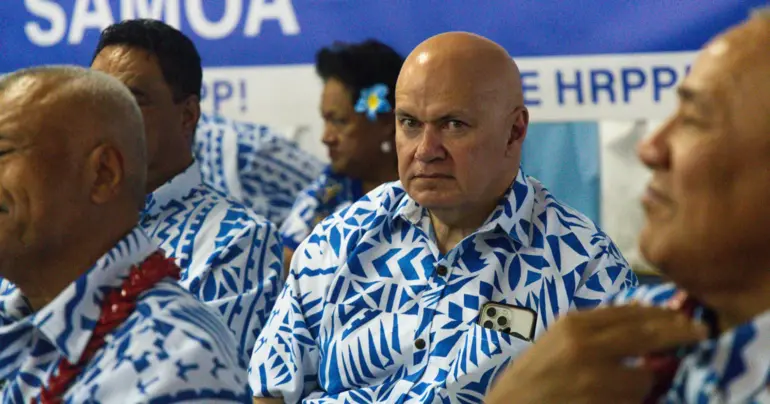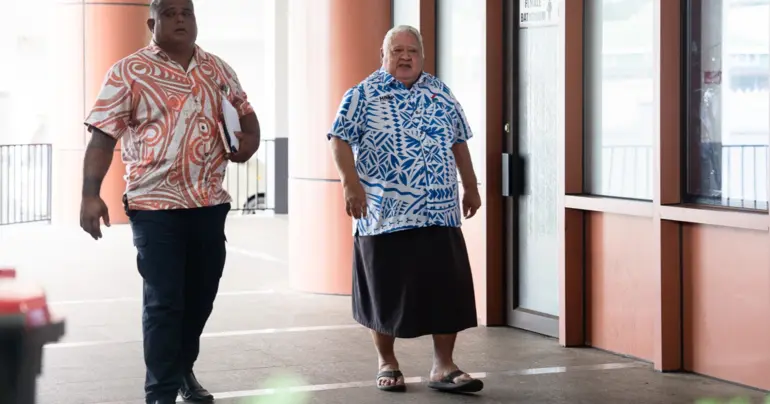Museum curator discusses Samoa's material culture
 By Fuimaono Lumepa Hald
•
13 June 2022, 1:07AM
By Fuimaono Lumepa Hald
•
13 June 2022, 1:07AM
A New Zealand museum curator of Samoan and Irish heritage has written on the intricacies of the life of a Samoan orator, their material culture and roles in traditional Samoan society.
Sean Mallon, who is the Curator of Pacific Histories and Cultures for the Museum of New Zealand Te Papa Tongarewa, focused on Samoa's material culture in his write up recently on the theme of the Samoan Language Week.
"The theme for Vaiaso o le Gagana Sāmoa – Sāmoan Language Week 2022 is Fa’aāuāu le Folauga i le Va‘a o Tautai – Continue the Voyage with Competent Wayfinders of the Ocean," he wrote and made reference to the role of the tulafale (orator) as one of a pathfinder.
"In Sāmoan society, the tulāfale or orator has a way of finding a role, through their lāuga (oratory) they represent the interests of ali‘i in any formal occasions or events.
“They are the mouthpiece of families, villages and districts and are influential in directing ceremonies, presentations and cultural protocols," he added.
Looking at the material culture of the tulāfale – the tools and accessories of their trade – Mr Malon wrote that Tulāfale are keepers and transmitters of cultural knowledge such as history and genealogies, but they are also pathfinders who negotiate the relationships between different parties.
“Through their work, they ensure the contexts for language and the art of speech making remain strong.”
The curator then made reference to the life of warrior like tulafale of Samoa, Lauaki Namulau‘ulu Mamoe, who was a leading tulāfale (orator chief) from Safotulafai, the political centre of the Fa‘asaleleaga district in Savai‘i.
Citing the work of Australian National University Professor of Pacific History, James Wightman Davidson (J.W. Davidson), Mr Malon said J.W. Davidson wrote that Lauaki was known throughout Samoa for “his mastery of history and legend, for his talents as a speaker and political negotiator and for his prowess in war."
He then expanded on the material culture of Samoa pertaining to the tulafale's role.
"In Sāmoa, tulāfale usually present their lāuga (ceremonial speeches) in two main settings: either indoors within a fale (house) or outdoors on the malae (village green).
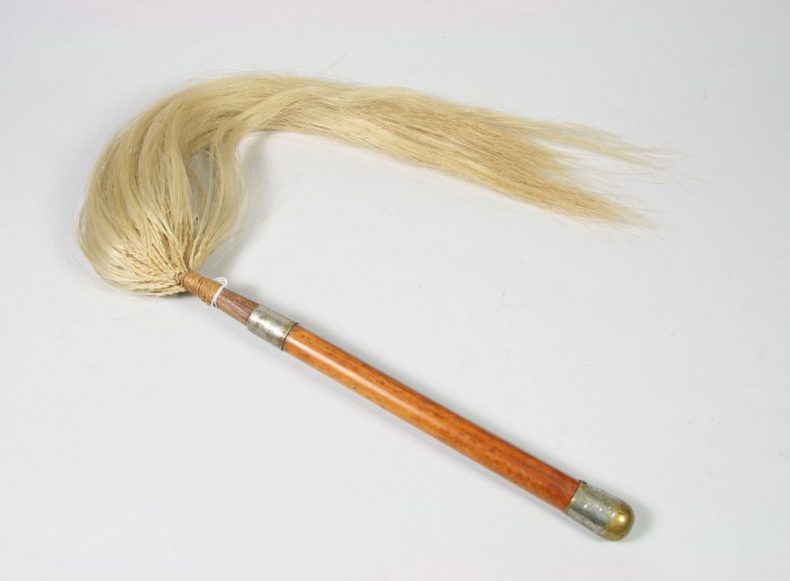
“There are different conventions for presentation and content in each context.
"When the tulāfale appears, the fue (whisk) is the most distinctive accessory associated with their role.
“However, they only carry the fue when they are performing as an orator. In the 1920s, fue with short tassels were called a fue fale, made for use inside a fale (house), while those with long tassels were made for use outside, the fue malae.
“A tulāfale will often flick the fue over one or each of his shoulders before he commences his speech.
“He will rest it on one shoulder or the other, depending on the length of speech he will deliver.”
Mr Mallon said that today most fue are made from long plaited strings of ‘afa (coconut sennit braid).
However, there are older examples reserved for high ranking tulāfale featuring the use of horsehair tied to handles decorated with carved geometrical motifs or silver end caps. The fue grasped by Namulau’ulu was made from horsehair with a silver end cap.
The curator also referred to the necklace worn by an orator, saying: "Tulāfale also wear a type of necklace called an ‘ulafala.
“In the context of oratory performances, ‘ulafala are important markers of social status.
“In other social and ceremonial situations, they can help identify a special guest or simply act as an attractive adornment.
“Ulafala are made from segments of the pandanus fruit described by botanists as carpels, phalanges or keys.
“The colour of the fruit spans a range from yellow through to orange and red when ripe. Red is a colour associated with high social status.
“The ‘ulafala is painted bright red, making it difficult to miss at any ceremony or function.”
Mr Mallon then pointed out the long wooden stuff used by the tulafale and said that they also carry to‘oto‘o (long wooden staffs) and together with the fue and the ‘ulafala become symbols of their office.
“There are a number of conventions about how the to‘oto‘o is handled and its proper placement during speech making,” he said.
“For example, they will place the to‘oto‘o between their first and second toes symbolising and connecting themselves firmly to the fanua (land).
“Historically, the to‘oto‘o was generally very plain and undecorated in form but smoothed and polished in finish. It was usually made to stand not taller than the tulāfale.
“In recent decades decorative carvings and wood staining have become a feature of their design.”
 By Fuimaono Lumepa Hald
•
13 June 2022, 1:07AM
By Fuimaono Lumepa Hald
•
13 June 2022, 1:07AM




